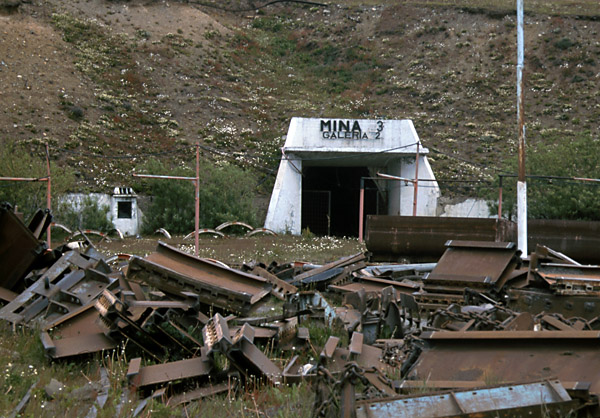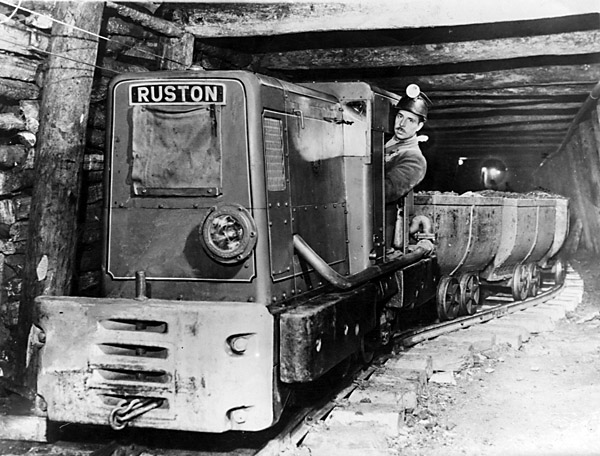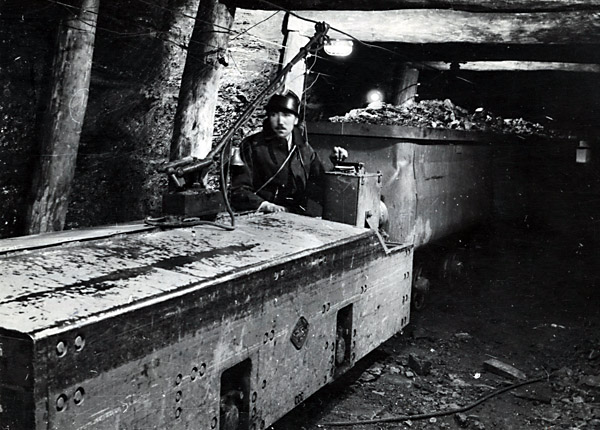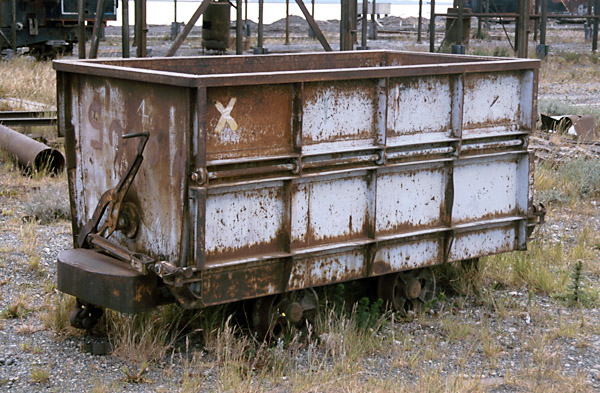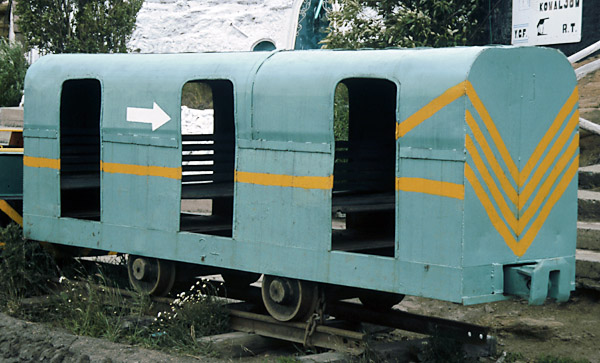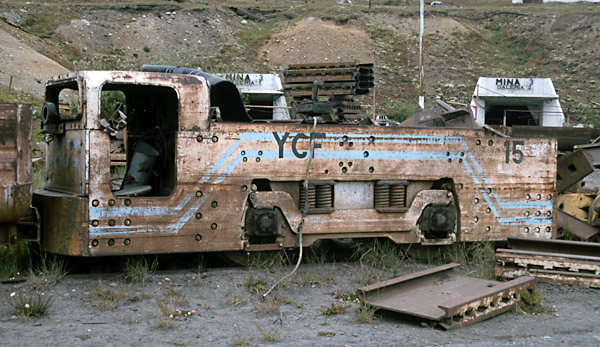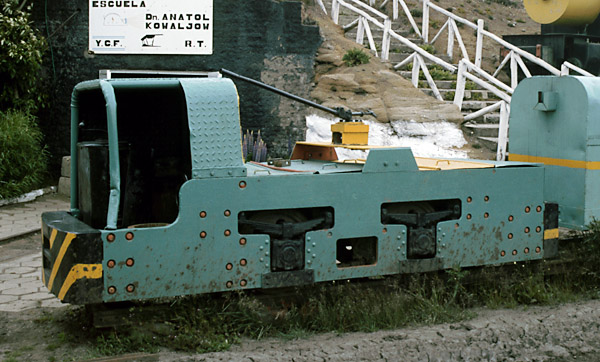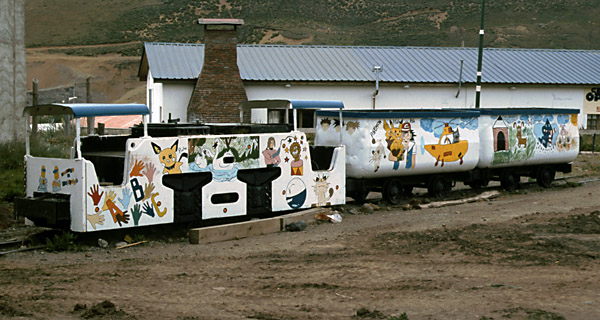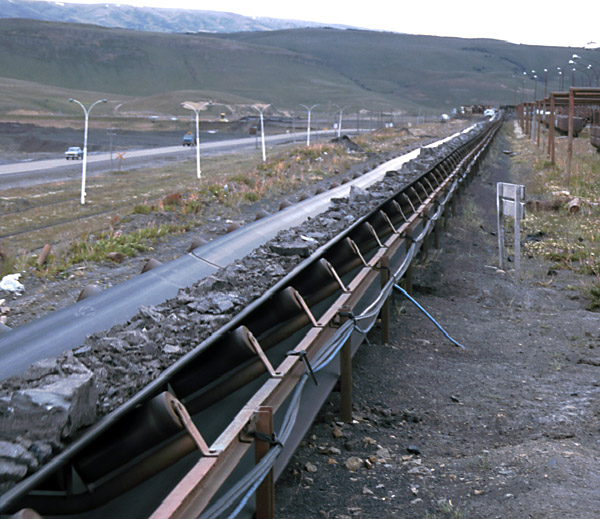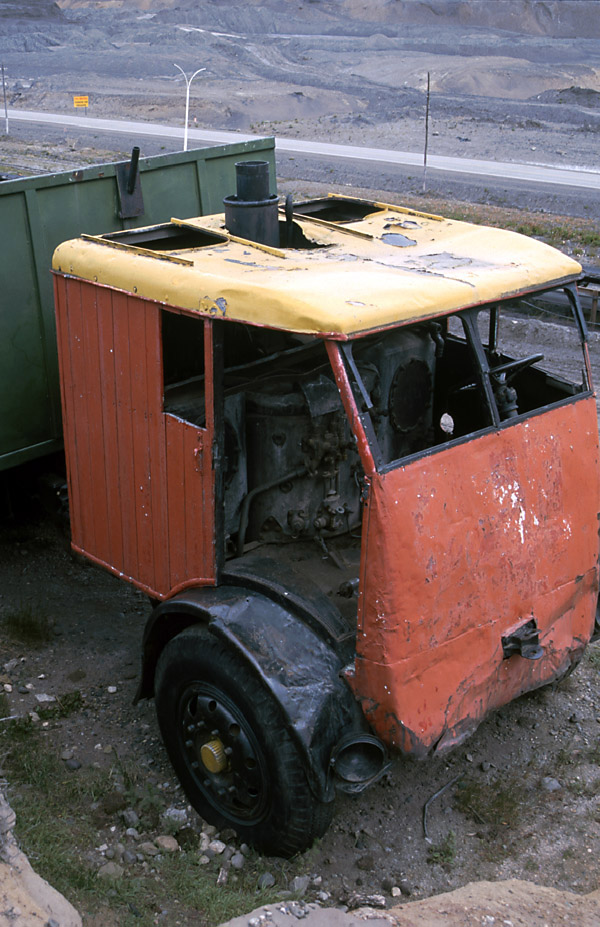 |
|||||||||||||||
 |
|||||||||||||||
 |
|||||||||||||||
 |
|||||||||||||||
An overhead electric system The coal deposits The mines The entrance to Mine 3.
The initial exploitation and operation until the early 1990s was under the control of Yacimientos Carboniferos Fiscales - the Argentinean national coal company. The mines are numbered, 1, 2, 3, 4 and 5. Mines 1 and 2 are at the head of the line, whilst nos. 3, 4 and then 5 are a couple of kilometres further east at Bacigalupo. Obviously production has varied with demand and the varying prices of orher fuels. As at year 2001 only mine 5 was producing coal. Mine railways This early picture shows a flame-proofed Ruston in one of the mine tunnels (3).
A Ruston diesel is also shown below on the surface, in a picture from the collection of the Amigos del Ferrocarril in Río Gallegos (1). Whilst it appears to be from the same batch as that above, the low cab roof seems to have been removed for use above ground.
One of the early electric locos, with a train of four tonne tippler wagons (3). Later electrics had cabs for the driver.
Early mine cars were side-unloading. Later ones were of a much more rounded shape and were emptied by means of a tippler. They therefore had no doors at all.
One source suggests that the mines eventually possessed 800 tub wagons and about 80 'tippers' (4). The railways were used to take equipment into the mines, to transport workers in and out, and to bring out the coal and waste. There were therefore a variety of other vehicles besides the hopper wagons. The picture below shows a typical man-riding car, used for carrying the miners at the beginning and end of each shift. This newly-painted example is on display at the mining museum outside mine 3.
Locomotives A Russian loco is shown below. The suspension is very like that used by General Electric (USA) mine locos.
Another was by AEG of Berlin, but probably constructed by its South American subsidiary. AEG works nos. 8571-4 of 1968, type HF5D have been recorded (2) I believe this to be one of the AEG locos, but have no further details.
An example of a third type of loco, this time with two cabs, lies in the children's playground at the upper end of Rio Turbio town. The twin cab loco in the playground. The colour scheme is unlikely to be original! Two of the later style tippler wagons are also displayed.
Replacement by conveyors
The main outside conveyor brings coal up the valley from each mine entrance to the washery Many of the old mine tub cars are dumped at mine three upside-down next to the conveyor belt, below.
Other relics
The sole survivor of 'Los Chufi', the 1950 Sentinel steam wagons which first hauled the coal to Rio Gallegos. The boiler, water tanks and chimney can be seen. Other photos of this vehicle are displayed on the initial RFIRT page. References: 28-11-11 |
|||||||||||||||
Main pages
Appendices
Chapter 9
Coal railways including the RFIRT


